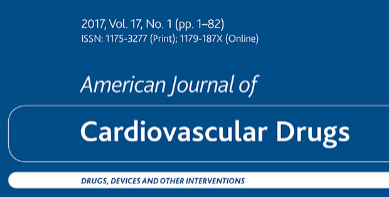Abstract and Introduction
Abstract
Despite treatment with statins, patients with elevated low-density lipoprotein cholesterol (LDL-C) and triglycerides remain at increased risk for adverse cardiovascular events. Consequently, novel pharmaceutical drugs have been developed to control and modify the composition of blood lipids to ultimately prevent fatal cardiovascular events in patients with dyslipidaemia. This article reviews established and emerging lipid-lowering drugs regarding their mechanism of action, development stage, ongoing clinical trials, side effects, effect on blood lipids and reduction in cardiovascular morbidity and mortality. We conducted a keyword search to identify studies on established and emerging lipid modifying drugs. Results were summarized in a narrative overview. Established pharmaceutical treatment options include the Niemann-Pick-C1 like-1 protein (NPC1L1) inhibitor ezetimibe, the protein convertase subtilisin-kexin type 9 (PCSK9) inhibitors alirocumab and evolocumab, fibrates as peroxisome proliferator receptor alpha (PPAR-α) activators, and the omega-3 fatty acid icosapent ethyl. Statins are recommended as the first-line therapy for primary and secondary cardiovascular prevention in patients with hypercholesterinaemia and hypertriglyceridemia. For secondary prevention in hypercholesterinaemia, second-line options such as statin add-on or statin-intolerant treatments are ezetimibe, alirocumab and evolocumab. For secondary prevention in hypertriglyceridemia, second-line options such as statin add-on or statin-intolerant treatments are icosapent ethyl and fenofibrate. Robust data for these add-on therapeutics in primary cardiovascular prevention remains scarce. Recent biotechnological advances have led to the development of innovative small molecules (bempedoic acid, lomitapide, pemafibrate, docosapentaenoic and eicosapentaenoic acid), antibodies (evinacumab), antisense oligonucleotides (mipomersen, volanesorsen, pelcarsen, olezarsen), small interfering RNA (inclisiran, olpasiran), and gene therapies for patients with dyslipidemia. These molecules specifically target new cellular pathways, such as the adenosine triphosphate-citrate lyase (bempedoic acid), PCSK9 (inclisiran), angiopoietin-like 3 (ANGPTL3: evinacumab), microsomal triglyceride transfer protein (MTP: lomitapide), apolipoprotein B-100 (ApoB-100: mipomersen), apolipoprotein C-III (ApoC-III: volanesorsen, olezarsen), and lipoprotein (a) (Lp(a): pelcarsen, olpasiran). The authors are hopeful that the development of new treatment modalities alongside new therapeutic targets will further reduce patients' risk of adverse cardiovascular events. Apart from statins, data on new drugs' use in primary cardiovascular prevention remain scarce. For their swift adoption into clinical routine, these treatments must demonstrate safety and efficacy as well as cost-effectiveness in randomized cardiovascular outcome trials.
Introduction
Cardiovascular diseases (CVD) are the leading cause of death worldwide.[1] In 2019, out of a total of 56.5 million deaths, 32.8% (18.6 million) were attributable to CVD—compared with 17.8% (10.1 million) deaths from neoplasms.[2] Among CVD, most deaths are attributable to ischemic heart diseases (16.2%, 9.1 million), strokes (11.6%, 6.6 million) and hypertensive heart diseases (2.0%, 1.2 million).[2]
Metabolic, behavioural, environmental and occupational risk factors adversely affect the incidence and progression of CVD.[1,3–6] High systolic blood pressure, dietary risks and elevated low-density lipoprotein cholesterol (LDL-C) levels count among the top three cardiovascular risk factors; each attributable for 25.0%, 17.2%, and 11.0% of CVD deaths, respectively.[2] Despite the widespread availability of low-cost statins, the majority of patients with dyslipidaemia do not attain adequate LDL-C levels by existing lifestyle modifications and pharmacological treatment strategies.[7–11] The DA VINCI study found that out of 5888 patients with dyslipidaemia who were enrolled in 18 European countries, only 33% achieved their risk-based LDL-C goal recommended in the European Society of Cardiology (ESC) 2019 guidelines.[12] These results were consistent across European countries.[13–15] Accordingly, an Australian study of 61,407 patients reported that only 36% achieved their recommended LDL-C levels.[16] Similarly, Klimchak et al. use claims data from 44 million US inhabitants to estimate that only 36% of high-risk patients with atherosclerotic CVD attain the recommended LDL-C level of < 70 mg/dL.[17] There are several reasons why the majority of patients do not sufficiently reach LDL-C levels. First, ESC and AHA/ACC/multi-society guidelines have recently pursued more string LDL-C reductions according to the principle 'the lower, the better'[18–20] For example, the recommended LDL-C level for very high-risk patients has been lowered from < 70 to < 55 mg/mL. Second, patients may be reluctant to pursue lower LDL-C levels with lifestyle modifications and regular pharmaceutical therapy in absence of short-term consequences. Third, high prices for new treatments, such as PCSK9 inhibitors, have been identified as a barrier to swift coverage and reimbursement by insurers.[21–24] Finally, there may simply not be a sufficient number of add-on and alternative therapies to statins given that approximately 9.1% of patients are intolerant to statins.[25]
As a consequence, multiple authors have concluded that there is a significant unmet medical need for patients with dyslipidaemia to reduce blood lipid levels to prevent the incidence of adverse cardiovascular events.[26–30] Therefore, in this article, we describe and review established and emerging lipid-lowering drugs regarding their molecular mechanism of action, effects on blood lipids, reduction of cardiovascular morbidity and mortality in primary and secondary prevention, and side effects.
Am J Cardiovasc Drugs. 2023;23(5):477-495. © 2023 Adis Springer International Publishing AG









